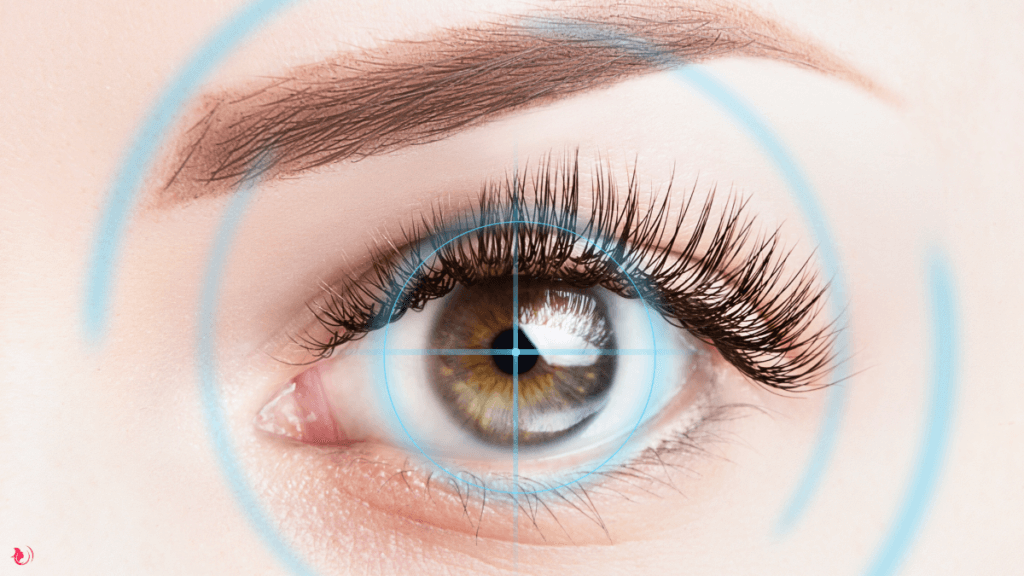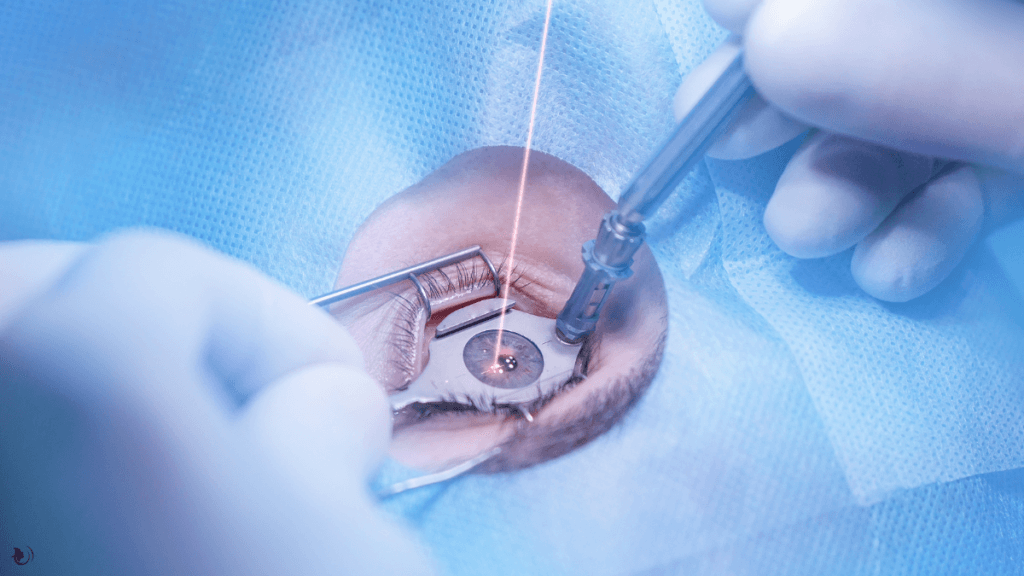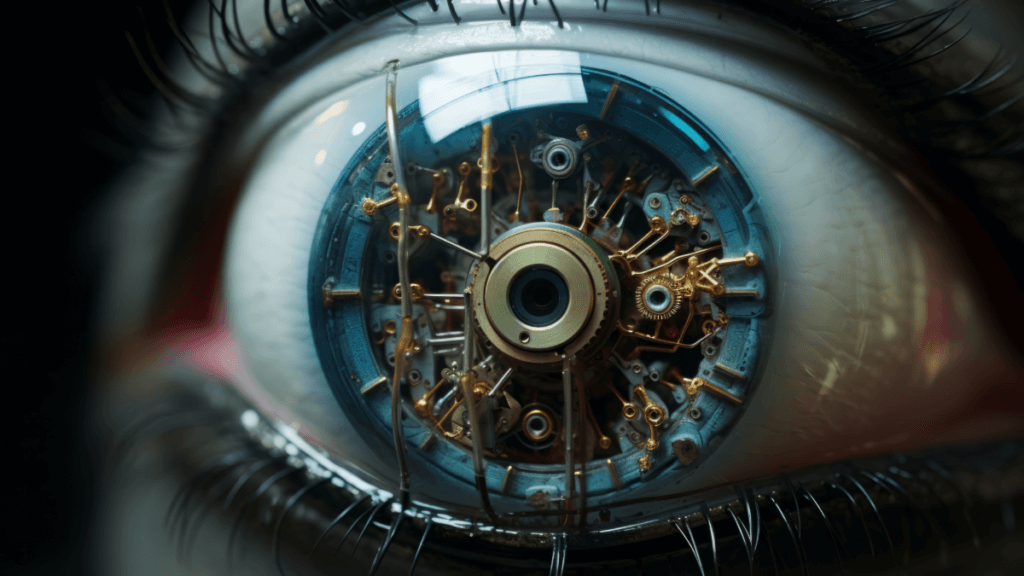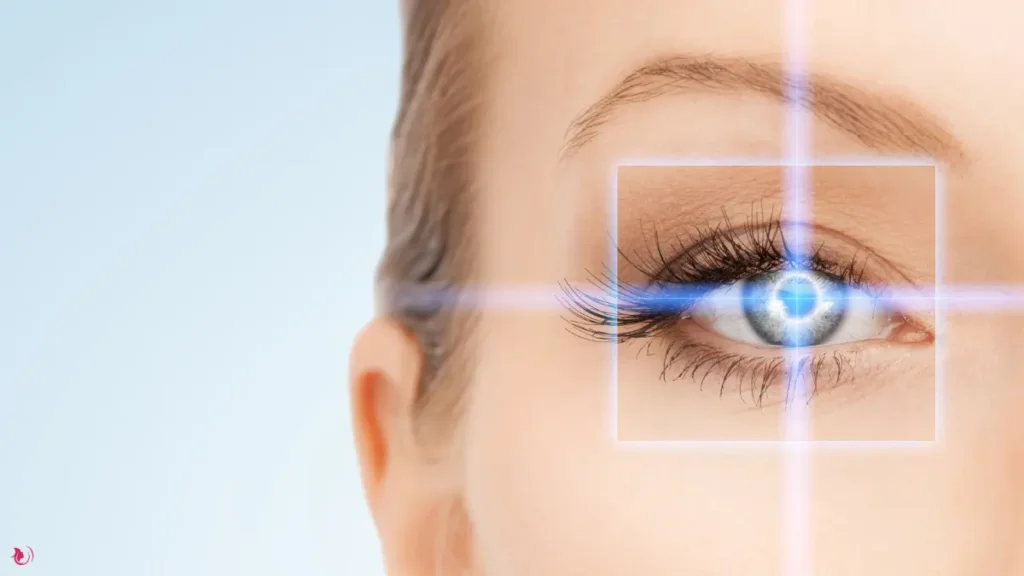Most people dislike wearing glasses. It could be because of the way it makes them look, or simply by having to always have them by their side. People simply do not love wearing glasses, with very few exceptions. Laser eye surgery can fix that. In one simple procedure. It has revolutionised the way we correct vision problems with a viable alternative to glasses and contact lenses.
Laser eye surgery can effectively treat long sight (hyperopia), short sight (myopia), and astigmatism. So you can experience clearer vision without being dependant on your dreaded eyewear. As part of the broader field of modern aesthetic treatments, laser eye surgery aligns with the trend towards minimally invasive procedures that offer significant lifestyle enhancements. And what’s even better, is the short recovery time.
In aesthetic medicine, the focus has increasingly shifted towards holistic improvements that not only enhance appearance but also improve the quality of life. Laser eye surgery fits perfectly into this paradigm, offering a functional and aesthetic improvement by eliminating the need for glasses or contact lenses, which can be cumbersome or impact one’s overall look.
However, since conditions like short or long sight are typically manageable with glasses or contacts, laser eye surgery is generally not covered by the NHS. Because it is considered an elective procedure. This means that while the benefits are substantial, patients usually need to cover the costs themselves. For those considering laser eye surgery, it’s essential to understand the different treatments available, their benefits, drawbacks, and what you can expect from each.
LASEK (Laser-Assisted Sub-Epithelial Keratectomy)

LASEK, or Laser Epithelial Keratomileusis, is a vision correction procedure that reshapes the cornea to correct refractive errors such as myopia (short sight), hyperopia (long sight), and astigmatism. It is particularly suitable for individuals with thin or flat corneas, which may not be ideal for other types of laser eye surgery like LASIK. Developed as an alternative for those who may not be eligible for LASIK, LASEK combines aspects of both LASIK and PRK (Photorefractive Keratectomy).
The LASEK procedure begins with the application of an alcohol solution to soften the outer layer of the cornea, called the epithelium. A finer tool is then used to create a flap in this epithelial layer, which is carefully peeled back to expose the underlying corneal tissue. An excimer laser is used to reshape the cornea by removing microscopic amounts of tissue. This reshaping allows light entering the eye to be properly focused onto the retina, resulting in clearer vision. After the laser reshaping, the epithelial flap is repositioned over the cornea.
One of the significant advantages of LASEK is the reduced likelihood of postoperative dry eyes compared to other methods like LASIK. This is because LASEK does not involve cutting a thick flap into the cornea, which can disrupt the corneal nerves responsible for tear production. Additionally, LASEK is less invasive, making it a safer option for individuals with thin corneas or those who are prone to corneal complications.
Another advantage is that LASEK typically has a lower risk of corneal flap complications, such as flap dislocation or folds, which can occur with LASIK. Because the epithelial flap created in LASEK is much thinner than the flap created in LASIK, there is less structural disturbance to the cornea.
The recovery period for LASEK can be longer than other laser eye surgeries, with vision typically improving over one to two weeks. Patients might experience discomfort for a couple of days following the procedure, which can be managed with pain relief medications and lubricating eye drops. It is common for patients to experience blurred vision, sensitivity to light, and a gritty sensation in the eyes during the initial recovery phase.
LASEK is ideal for patients with:
- Thin corneas that are not suitable for LASIK.
- Flat corneas that may pose a challenge for flap creation in LASIK.
- Active lifestyles or occupations that carry a higher risk of eye trauma, as LASEK does not create a thick corneal flap that could be dislodged.
- Dry eye syndrome, as LASEK has a lower risk of exacerbating dry eye symptoms compared to LASIK.
PRK (Photorefractive Keratectomy)

Photorefractive Keratectomy (PRK) is one of the oldest forms of laser eye surgery, and although it has been largely superseded by newer techniques such as LASIK and SMILE, it remains a viable option for certain patients. PRK is especially beneficial for individuals with thin corneas or those who have corneal surface irregularities, where creating a flap, as done in LASIK, might not be advisable. The procedure involves reshaping the cornea to correct refractive errors like myopia (short sight), hyperopia (long sight), and astigmatism.
During the PRK procedure, the outer layer of the cornea (the epithelium) is completely removed to expose the underlying corneal tissue. This layer regenerates naturally over time. Once the epithelium is removed, an excimer laser is used to precisely reshape the corneal stroma by removing microscopic amounts of tissue. This reshaping allows light entering the eye to be properly focused onto the retina, resulting in clearer vision. The procedure is typically performed under topical anaesthesia, and the entire process usually takes about 15 to 30 minutes for both eyes.
One of the main advantages of PRK is that it does not involve creating a corneal flap, which eliminates the risk of flap complications that can occur with LASIK. This makes PRK a safer option for individuals with thin corneas or those involved in contact sports or occupations where eye trauma is a risk. Additionally, PRK can be a preferable choice for patients with large pupils or corneal surface irregularities.
PRK also offers the benefit of a lower risk of dry eyes postoperatively compared to LASIK, as the procedure does not disrupt the corneal nerves as extensively. This can be particularly advantageous for patients who already suffer from dry eye syndrome.
The recovery period for PRK is longer than for LASIK. After the procedure, a bandage contact lens is placed over the eye to protect it and facilitate healing. The outer epithelial layer typically regenerates within three to five days, during which time patients may experience significant discomfort, including pain, tearing, and sensitivity to light. Pain management and frequent use of lubricating eye drops are essential during this initial recovery phase.
PRK is particularly suitable for:
- Patients with thin or irregular corneas who are not candidates for LASIK.
- Individuals with active lifestyles or jobs where eye trauma is a concern, as there is no corneal flap that could be dislodged.
- Patients with dry eyes, since PRK has a lower risk of exacerbating dry eye symptoms.
LASIK (Laser-Assisted In Situ Keratomileusis)

LASIK, or Laser-Assisted In Situ Keratomileusis, is one of the most popular and well-known laser eye surgery procedures due to its quick recovery time and immediate results. It is widely used to correct refractive errors such as myopia (short sight), hyperopia (long sight), and astigmatism, allowing patients to achieve clear vision without the need for glasses or contact lenses.
LASIK is, to put it simply, a surgery for your eyes that helps fix problems with how you see. It works by making a very thin flap on the front part of your eye, called the cornea. This flap is lifted up, and a special laser is used to change the shape of the cornea a bit. This helps your eyes focus better, so you can see clearly.
After the surgery, the flap is put back in place and helps your eyes heal quickly. You might feel a bit uncomfortable, but it’s usually not too bad. You can even do most things as normal right away. Most people who have LASIK surgery get much better vision, sometimes even 20/20. The lasers used in the surgery are very precise, so it’s a pretty safe and successful treatment.
Ideal candidates for LASIK typically have:
- A stable refractive error for at least one year.
- Sufficient corneal thickness to create a safe flap.
- No severe dry eye syndrome or other eye conditions that could impair healing.
SMILE (Small Incision Lenticule Extraction)

SMILE, or Small Incision Lenticule Extraction, is a relatively new, minimally invasive laser eye surgery that has gained significant popularity due to its precision and quick recovery time. Developed as an alternative to traditional laser vision correction methods like LASIK, SMILE offers a different approach by eliminating the need for creating a corneal flap, thereby reducing the risk of associated complications.
The SMILE procedure involves using a femtosecond laser to create a small, lens-shaped piece of tissue, called a lenticule, within the cornea. This lenticule is then removed through a tiny incision, typically less than 4 mm, made on the surface of the cornea. By removing the lenticule, the cornea is reshaped, allowing for the correction of refractive errors such as myopia (short sight) and astigmatism. The entire procedure is performed using a single laser, enhancing precision and reducing the time required for surgery.
The recovery process for SMILE is typically smooth and swift. Most patients experience improved vision within a few days, with minimal discomfort during the healing process. The small incision made in the cornea heals quickly, and the risk of complications is relatively low. Patients are usually advised to avoid strenuous activities and protect their eyes from water and dust for a few days post-surgery.
SMILE is suitable for:
- Patients with myopia and astigmatism.
- Individuals with thin corneas who may not be eligible for LASIK.
- Patients concerned about the risk of dry eyes post-surgery.
- Those seeking a minimally invasive procedure with a quick recovery time.
Z-LASIK (Femtosecond LASIK)

Z-LASIK, or Femtosecond LASIK, is an advanced form of laser eye surgery that enhances the traditional LASIK procedure by using a femtosecond laser to create the corneal flap instead of a mechanical blade. This bladeless technique offers increased precision, safety, and predictability, making it an attractive option for individuals who might be apprehensive about traditional LASIK.
The Z-LASIK procedure begins with the use of a femtosecond laser to create a thin, precise flap in the cornea. This step replaces the microkeratome blade used in conventional LASIK, reducing the risk of mechanical complications. The laser allows for a highly controlled incision, ensuring uniform flap thickness and positioning.
Once the flap is created and lifted, an excimer laser is used to reshape the underlying corneal tissue, correcting refractive errors such as myopia (short sight), hyperopia (long sight), and astigmatism. After the reshaping is complete, the flap is repositioned over the cornea, where it naturally adheres without the need for stitches.
The recovery process for Z-LASIK is typically swift, with many patients experiencing significant visual improvement within 24 to 48 hours. As with other laser eye surgeries, it is essential to follow the post-operative care instructions provided by the surgeon, including the use of prescribed eye drops to prevent infection and reduce inflammation. Patients are usually advised to avoid strenuous activities and protect their eyes from water and dust for a few days post-surgery.
Z-LASIK is suitable for a wide range of patients, including those with:
- Higher degrees of refractive errors.
- Thin corneas, where traditional LASIK may not be feasible.
- Concerns about flap-related complications and mechanical blade usage.
Not For Everyone
Because there are critical decisions to be made in the realm of laser eye surgery, you will need a highly trusted and experienced eye surgeon. They only possess the ability to evaluate your needs and recommend a procedure for you.
Qualifying your practitioner would result in reducing possible risks involved in laser eye surgery and also helps to yield the best possible outcome. Be it in the non-invasive treatments of LASEK and PRK or even advanced techniques like LASIK and SMILE, success and safety depend a lot on the skill and knowledge of an eye doctor.



1 Comment
I didn’t know there were so many different types of laser eye surgery. I knew the tech had evolved since it’s inception, but I didn’t know that there were so many options for someone seeking this treatment.